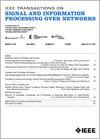Variational Graph Neural Network Based on Normalizing Flows
IF 3
3区 计算机科学
Q2 ENGINEERING, ELECTRICAL & ELECTRONIC
IEEE Transactions on Signal and Information Processing over Networks
Pub Date : 2025-01-17
DOI:10.1109/TSIPN.2025.3530350
引用次数: 0
Abstract
Graph Neural Networks (GNNs) have recently achieved significant success in processing non-Euclidean datasets, such as social and protein-protein interaction networks. However, these datasets often contain inherent uncertainties, such as missing edges between nodes that are closely related. Variational Graph Auto-Encoders (VGAE) and other Bayesian methods have been proposed to address the problem. Unfortunately, they can't handle graph data effectively. VGAE, for instance, the posterior is assumed to be Gaussian, which can not match the true posterior well. To overcome these limitations, a normalizing flows(NFs) based on variational GNN is proposed in this paper. Unlike VGAE, our approach no longer assumes that the posterior distribution is a standard Gaussian distribution, but instead utilizes NFs to learn more complex and flexible distributions. NFs transforms simple distributions into complex ones through a series of invertible transformations. The transformed distribution is more flexible and can match the true distribution better. Specifically, in order to obtain the reversible transformer, inspired by RealNVP, affine transformations on graphs are used to map a simple distribution to a complex one. The transformed distribution can infer more complex distributions like skewed. We conduct experiments in the link prediction task and our method performs excellently compared with other methods and even achieves state-of-the-art results on some datasets.基于归一化流的变分图神经网络
图神经网络(gnn)最近在处理非欧几里得数据集方面取得了重大成功,例如社会和蛋白质-蛋白质相互作用网络。然而,这些数据集通常包含固有的不确定性,例如密切相关的节点之间缺少边。变分图自编码器(VGAE)和其他贝叶斯方法已经被提出来解决这个问题。不幸的是,它们不能有效地处理图形数据。以VGAE为例,后验假设为高斯,不能很好地匹配真实后验。为了克服这些限制,本文提出了一种基于变分GNN的归一化流(NFs)。与VGAE不同,我们的方法不再假设后验分布是标准高斯分布,而是利用NFs来学习更复杂和灵活的分布。NFs通过一系列可逆变换将简单分布转换为复杂分布。变换后的分布更灵活,能更好地匹配真实分布。具体来说,为了获得可逆变压器,受RealNVP的启发,利用图上的仿射变换将一个简单分布映射到一个复杂分布。变换后的分布可以推断出更复杂的分布,比如歪斜分布。我们在链路预测任务中进行了实验,与其他方法相比,我们的方法表现出色,甚至在一些数据集上取得了最先进的结果。
本文章由计算机程序翻译,如有差异,请以英文原文为准。
求助全文
约1分钟内获得全文
求助全文
来源期刊

IEEE Transactions on Signal and Information Processing over Networks
Computer Science-Computer Networks and Communications
CiteScore
5.80
自引率
12.50%
发文量
56
期刊介绍:
The IEEE Transactions on Signal and Information Processing over Networks publishes high-quality papers that extend the classical notions of processing of signals defined over vector spaces (e.g. time and space) to processing of signals and information (data) defined over networks, potentially dynamically varying. In signal processing over networks, the topology of the network may define structural relationships in the data, or may constrain processing of the data. Topics include distributed algorithms for filtering, detection, estimation, adaptation and learning, model selection, data fusion, and diffusion or evolution of information over such networks, and applications of distributed signal processing.
 求助内容:
求助内容: 应助结果提醒方式:
应助结果提醒方式:


